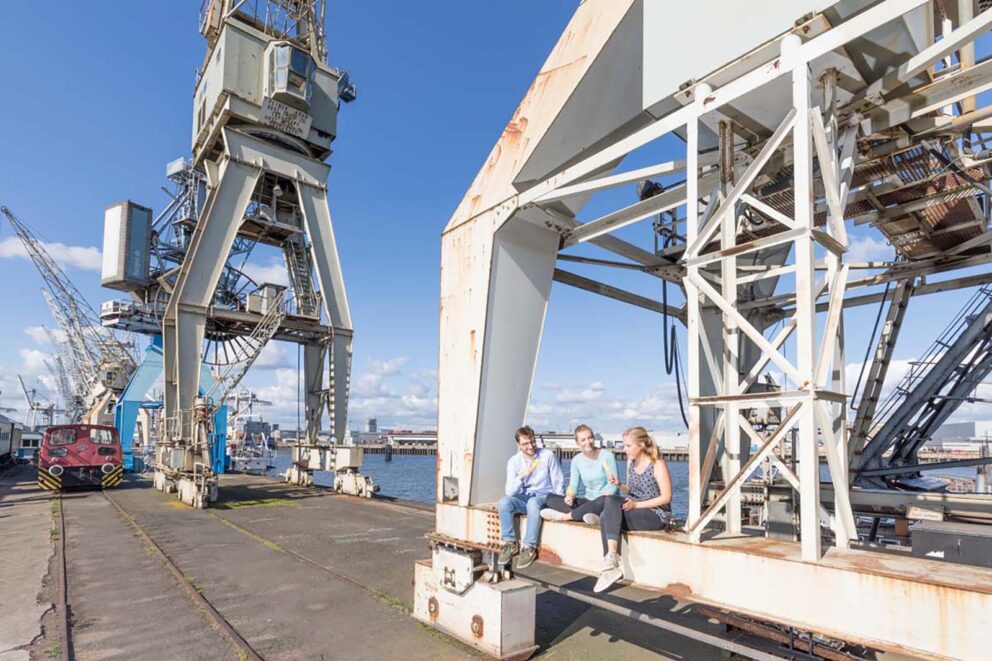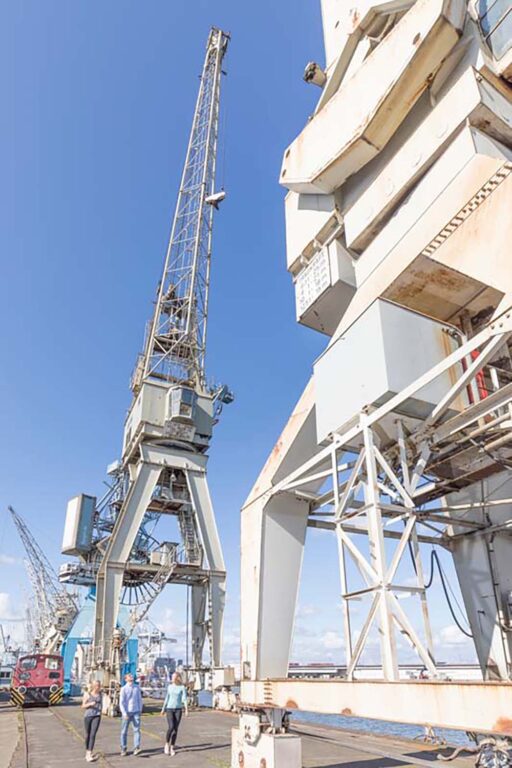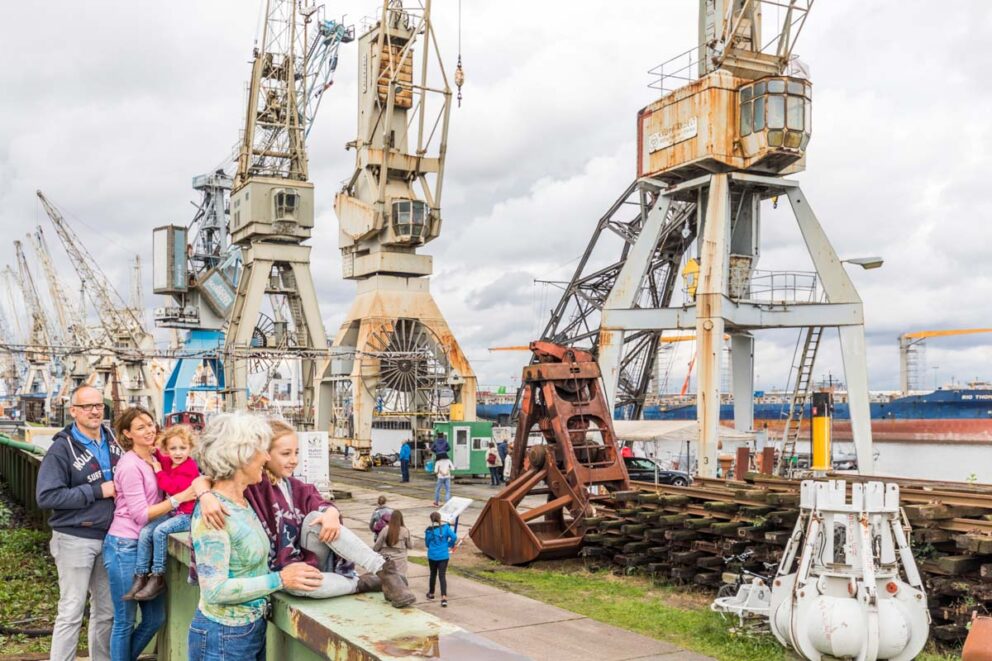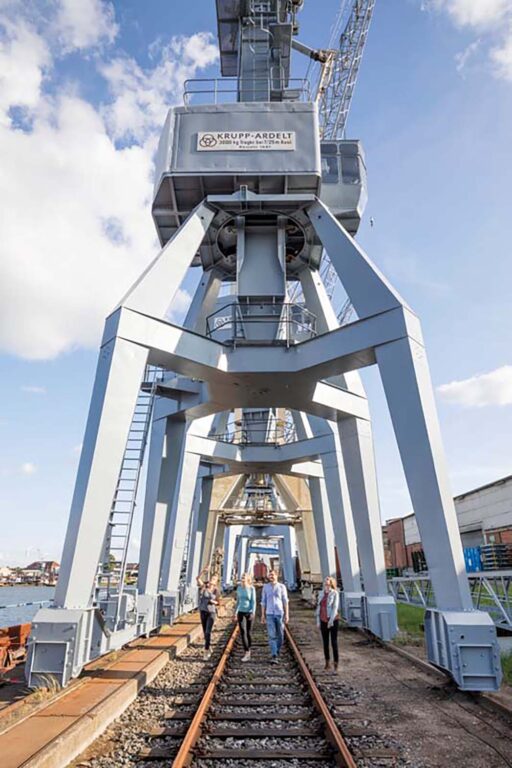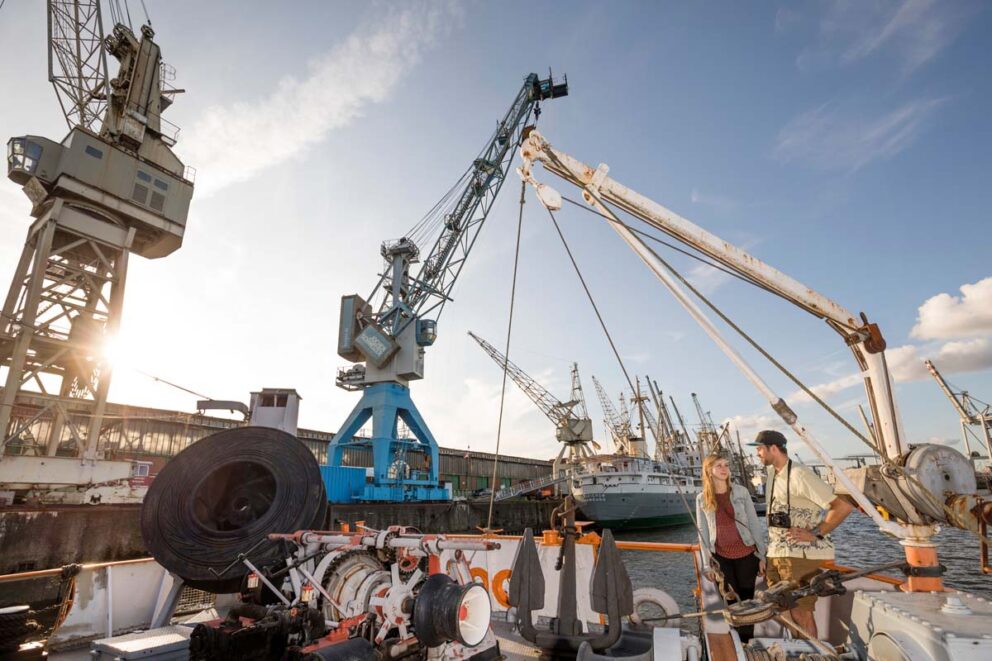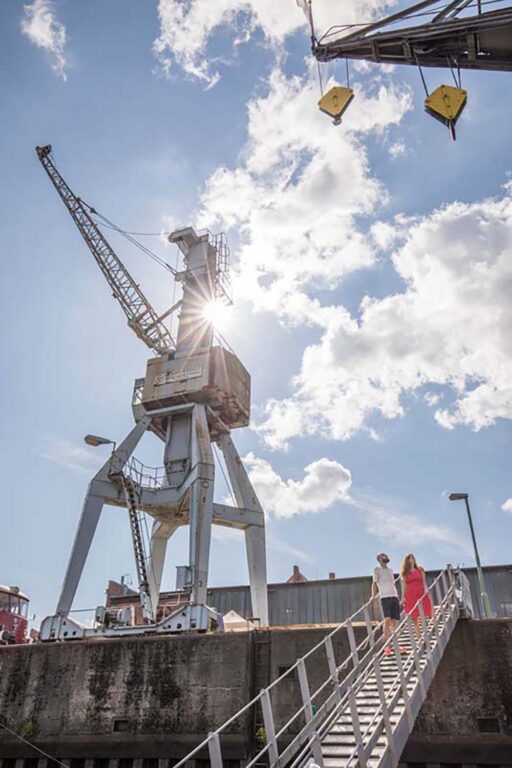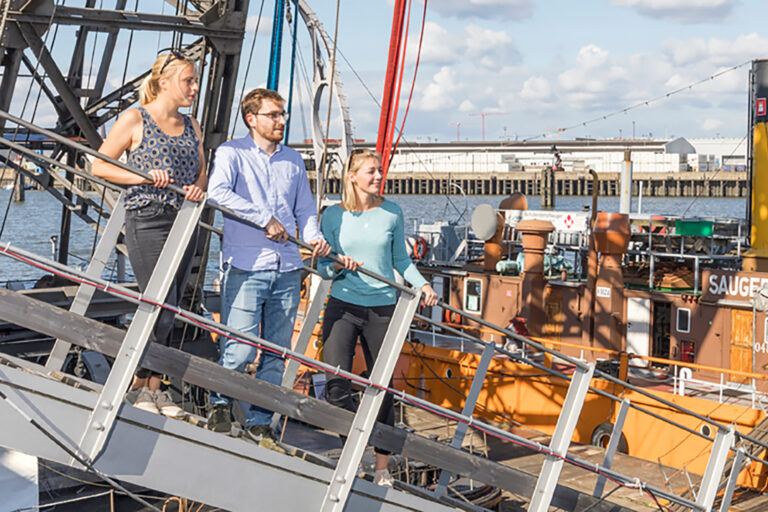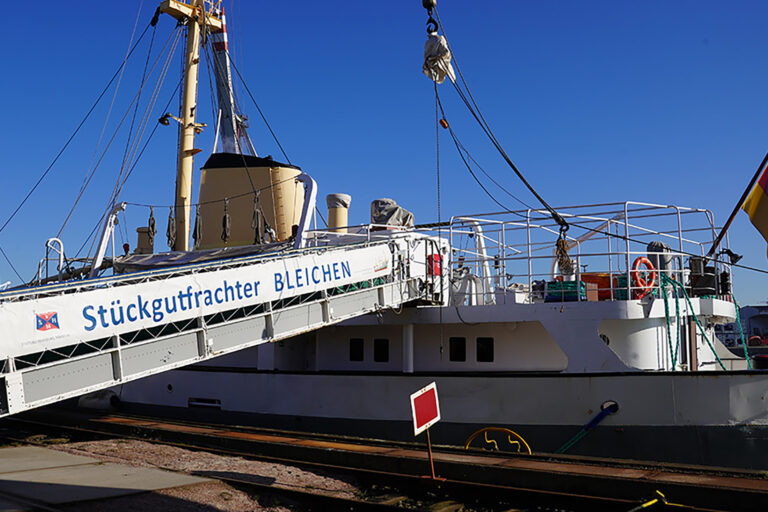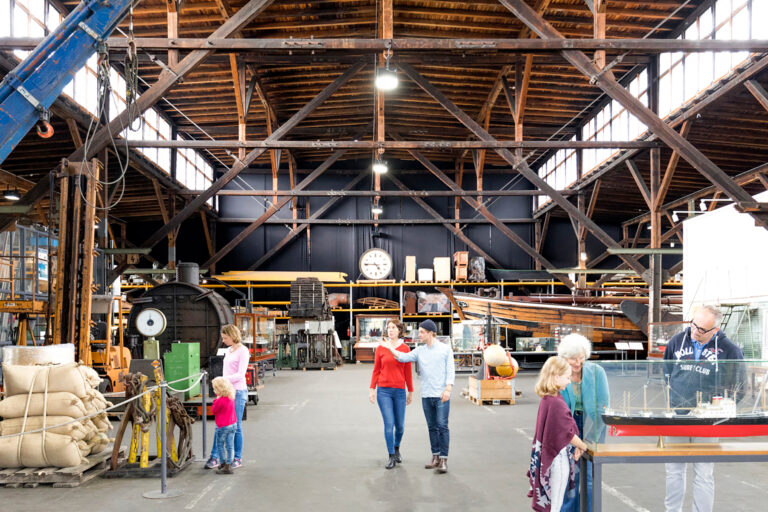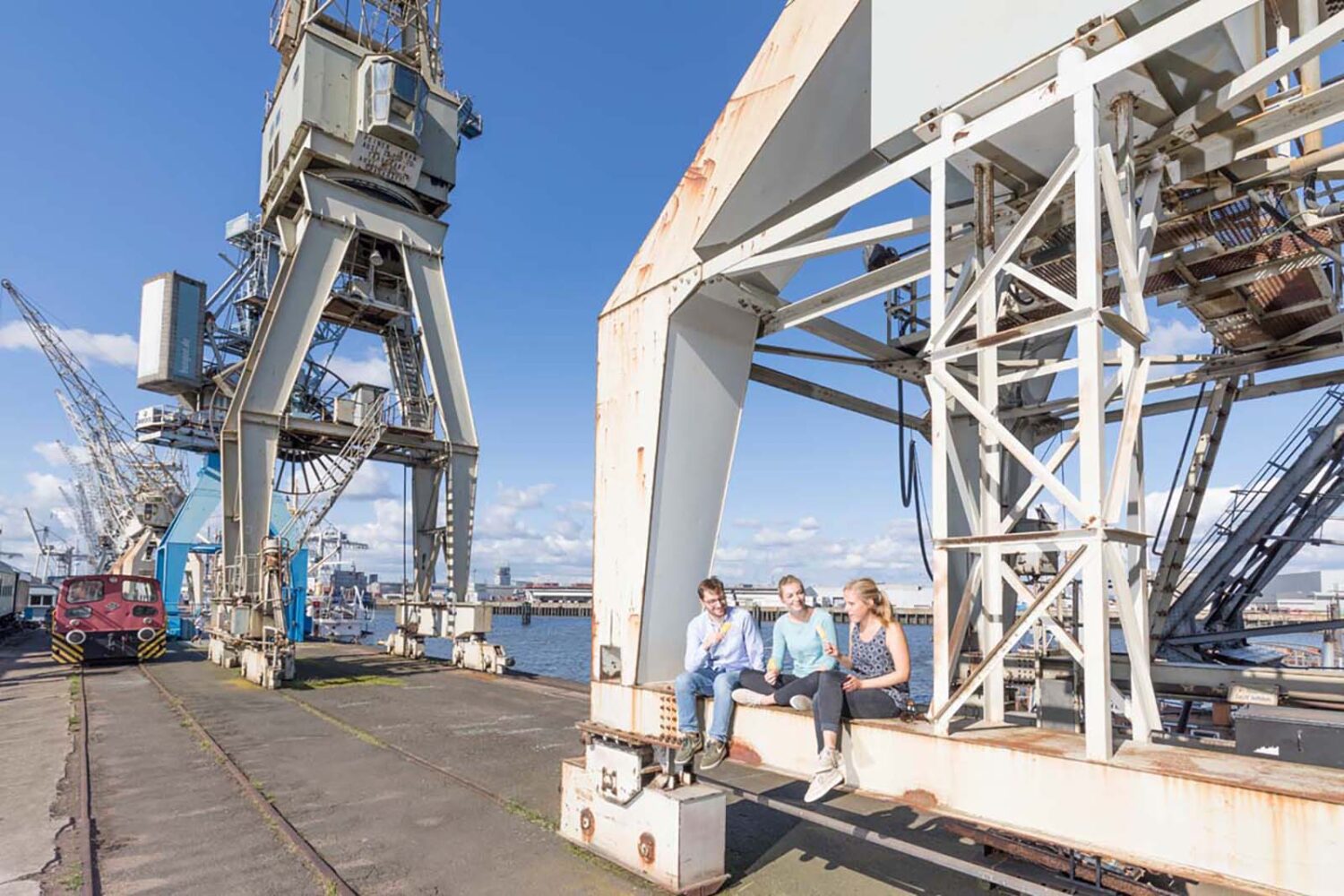
Along the museum’s pontoon bridge, you find the floating exhibits tied up. The floating crane Saatsee from 1917 and the steam-powered suction machine Sauger IV from 1909 with their impressive steam engines are started up for special events and presented to the visitors. On the barge H11347 from 1913, there is an exhibition about the Ewerführerei, a nearly extinct job in the port: The conductors of the Ewer, a type of barge without own drive and one of the most important means of transport in the port of Hamburg before the revolution of the container.
Highlight
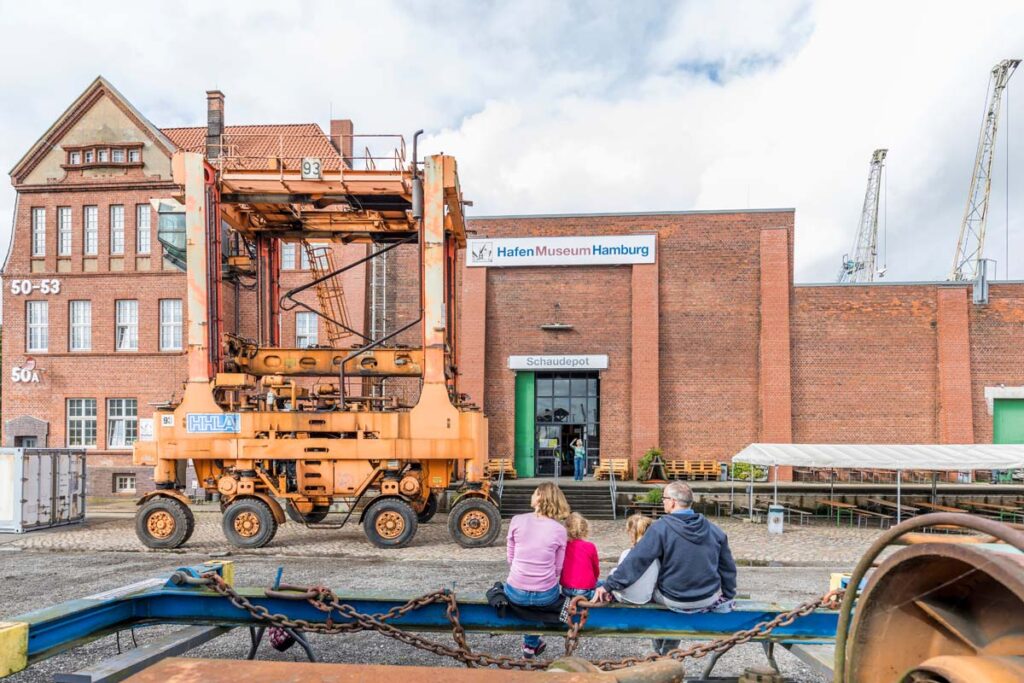
Van Carrier
The van carrier is the busy one of the machines in a terminal – a mixture of lifting device and mean of transportation. It is planned for picking up the containers at the terminal and moving them between the gantry cranes on the quay and the temporary store. Furthermore, it supports the delivery with trucks or stacking containers in the intermediate range. As container handling keeps growing, van carriers have been developed further constantly. The first ones could stack two containers, one on top of the other; today, they are able to stack four containers on top of each other.
The first-generation van carrier VC 26 is the last one from that time that is still serviceable. On 1st May 1992, it was donated by HHLA as a gift to the Hafenmuseum Hamburg. On 5th June 1991, they had taken it out of service after 37.000 operating hours in order to scrap it. It can lift containers up to a weight of 30 tons and drive at a speed of 40 km/h. It is hydraulic driven and powered by a diesel engine of 200 hp. The driver in the capsule is located at about 7, 50 metres above the road.


